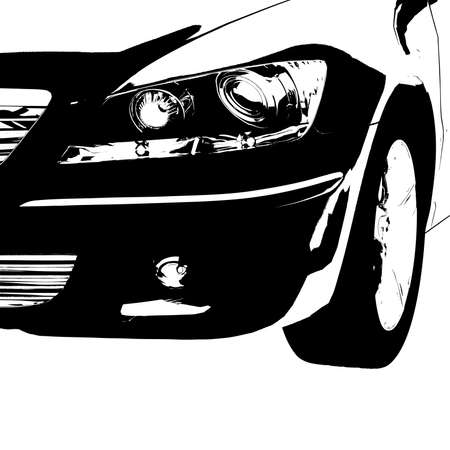Understanding Car Insurance in the UK
If you’ve ever thumbed through a yellowed Haynes manual or admired the gentle curves of an old Morris Minor, you’ll know that motoring in Britain is about more than just getting from A to B. It’s a tapestry woven with history, culture, and—unfortunately—the sometimes perplexing world of car insurance. Before we dive into our 27 proven methods to lower your car insurance costs, let’s take a nostalgic look at how car insurance has evolved across the UK, what it typically covers, and why premiums can vary so much between classic beauties and modern runabouts.
The Evolution of Car Insurance in Britain
British car insurance dates back to the 1930s, when the Road Traffic Act made third-party cover compulsory for all motorists. In those days, policies were hand-written and claims settled over a cup of tea. Over the decades, as British roads filled up with everything from Minis to Jaguars, insurance became a staple of responsible motoring life—yet its complexity grew as well.
What Does UK Car Insurance Cover?
| Type | Description |
|---|---|
| Third-Party Only | Covers damage or injury you cause to others; legally required minimum. |
| Third-Party, Fire & Theft | Includes third-party cover plus protection if your vehicle is stolen or catches fire. |
| Comprehensive | Covers third-party risks, theft, fire, and accidental damage to your own vehicle. |
Why Do Premiums Vary So Much?
Back in the days when petrol cost shillings and most cars topped out at 60mph, premiums were simpler. Today, insurers pore over every detail: where you live (from leafy villages to bustling high streets), your driving record, annual mileage, and even your job title. But there’s another twist for enthusiasts: classic cars can often be insured for less than some modern hatchbacks—thanks to limited use policies and specialist brokers who understand that classic owners tend to cherish their motors.
So whether you’re driving a vintage Austin Healey or a brand-new Fiesta, understanding these fundamentals sets the scene for slashing your insurance bill. In the sections ahead, we’ll uncover those 27 time-tested ways to keep more pounds in your pocket while staying legal on Her Majesty’s highways.
Choosing the Right Cover for Your Needs
When it comes to trimming your car insurance bill, selecting the most suitable level of cover is a quintessential first step for UK drivers. With three main types—Third Party, Third Party Fire and Theft, and Comprehensive—each offers distinct advantages and is priced according to the risk covered. Let’s take a closer look at what each one provides:
| Cover Type | What’s Included | Who It’s Best For | Potential Savings Tip |
|---|---|---|---|
| Third Party Only (TPO) | Covers damage you cause to others’ vehicles or property; injuries to other people | Bargain hunters with older motors or those clocking up low annual mileage | If your car isn’t worth much, this basic legal minimum could make sense |
| Third Party, Fire & Theft (TPFT) | TPO benefits plus protection if your car is stolen or damaged by fire | Drivers wanting a bit more peace of mind without breaking the bank | Ideal if you park on-street or in areas with higher theft risk but don’t need full cover |
| Comprehensive (Fully Comp) | All TPFT features plus accidental damage to your own vehicle, regardless of fault | Owners of newer or cherished cars who want maximum protection | Sometimes ‘fully comp’ can be cheaper than lower covers—always get a quote! |
Navigating Everyday British Motoring Realities
Your choice should reflect not just your wallet but how and where you drive. For instance, if your beloved classic rarely leaves the garage except for Sunday runs, Third Party Fire & Theft might suffice. But if you’re braving rush hour on the M25 daily or parking in busy city streets, Comprehensive cover could save heartache—and cash—in the long run.
Top Tips from the British Motorist’s Toolbox:
- Review Annually: Don’t just auto-renew; insurers often reward new customers more than loyal ones.
- Consider Excess: Increasing your voluntary excess can lower premiums—but only set what you can afford in case of a claim.
- Add Named Drivers Carefully: Adding an experienced driver may cut costs, but avoid “fronting”—it’s illegal.
- Mileage Matters: Be honest about annual mileage—overestimating bumps up costs unnecessarily.
- Garaging Bonus: Secure overnight parking can reduce risks and premiums, especially in urban areas.
The Bottom Line for UK Drivers
No single type of cover suits everyone. Assess your driving habits, car value, and personal comfort with risk. Shop around using comparison sites and always double-check what’s included—sometimes that old-school phone call to a broker yields a hidden gem of a deal. Choose wisely, and enjoy motoring with more money left for your next road trip—or perhaps a few pints at the local after a trouble-free journey!

3. Proven Methods to Cut Your Premiums
When it comes to keeping your classic or everyday motor insured without breaking the bank, British drivers have always been a resourceful bunch. Below is a practical list of tried-and-true techniques—some straight out of the old-timer’s handbook, others modern tweaks that make insurers smile.
Improve Security and Storage
Nothing says “I care for my motor” quite like safeguarding it against theft or damage. Classic car enthusiasts and daily drivers alike can benefit from these security upgrades:
| Security Measure | Potential Savings (%) | Typical UK Usage |
|---|---|---|
| Install Thatcham-approved alarm/immobiliser | 5-10% | Standard for many classics & moderns |
| Keep vehicle in a locked garage overnight | 5-15% | Popular in suburbs & rural areas |
| Add a steering wheel lock or tracking device | 3-7% | Favoured by city dwellers |
Tweak Your Mileage and Annual Usage
The fewer miles you clock up around the M25 or your local B-roads, the less risk you pose—so be honest about your annual mileage when getting quotes. Many classic owners only take their pride and joy out on weekends, which can mean substantial savings.
| Mileage Band (per year) | Average Premium Difference (£) |
|---|---|
| <5,000 miles | -£150 vs average |
| 5,000–10,000 miles | -£80 vs average |
| >10,000 miles | No discount |
Adjust Your Voluntary Excess
A true mark of a cost-conscious driver: offering to pay a higher voluntary excess. This shows insurers you’re not likely to claim over every scratch, which can lower your premium significantly. Just be sure it’s an amount you could genuinely afford if the worst happened.
Comparison of Typical Voluntary Excess Choices:
| Voluntary Excess (£) | Estimated Premium Reduction (%) |
|---|---|
| £100–£250 | Standard rate |
| £300–£500 | Up to 10% off |
| £600+ | Up to 15% off (check terms!) |
Add Experienced Drivers (but Avoid High-Risk Names)
If you add a seasoned driver—think mum, dad or your partner with decades of no-claims history—to your policy, insurers often see this as lowering overall risk. Just steer clear of including anyone with points or recent claims.
A Few More Time-Honoured Tips:
- Select a lower insurance group car (older Ford Fiestas and Vauxhall Corsas are wallet-friendly)
- Avoid unnecessary modifications—keep it original where possible for cheaper cover!
- Pile up those No Claims Bonus years—the longer, the better for your renewal quote.
- Pay annually rather than monthly to dodge interest charges.
- If you’re part of an owners’ club (especially for classics), mention this for possible discounts.
- Shop around at renewal—never accept your first quote without comparing at least three providers.
The savvy British motorist knows: every little helps when it comes to lowering insurance costs. Whether you drive an Austin Allegro or a brand-new Mini, these methods can keep more pounds in your pocket and your wheels on the road where they belong.
4. Smart Shopping and Comparing Quotes
When it comes to lowering your car insurance costs in the UK, nothing beats a bit of old-fashioned smart shopping mixed with modern technology. Back in the day, you might have popped down to your local garage, shared a cuppa with the mechanic, and heard about the best deals around town. Today, we’ve got comparison sites instead—but the spirit of careful negotiation and shrewd shopping remains as important as ever.
Advice for Using UK Price Comparison Sites
The likes of Comparethemarket, GoCompare, MoneySuperMarket, and Confused.com are your digital garage forecourts, each offering a range of quotes from different insurers. But don’t just pick the cheapest at first glance—insurers know how to tempt you with low initial prices and then sneak in extra fees or hike up renewals later on. Here’s how to use these sites like a pro:
| Tip | Why It Matters |
|---|---|
| Use Multiple Sites | No single comparison site lists every insurer; check at least 2-3 for a fuller picture. |
| Double-Check Details | Tweak your excess, mileage, job title, and parking details for more accurate quotes. |
| Avoid Automatic Renewals | Insurers may charge loyal customers higher rates; always shop around before renewing. |
| Consider Direct-only Insurers | Some firms (like Direct Line) aren’t listed on comparison sites—get quotes from them directly too. |
Understanding Renewal Traps
It’s all too easy to let your policy roll over, especially when life gets busy. But this ‘loyalty penalty’ can cost you dearly. Insurers often reserve their best deals for new customers—so channel that resourcefulness of your local mechanic and question every renewal notice. Set yourself a calendar reminder a month before your policy ends and start comparing early.
Classic Haggling: When (and How) to Negotiate
If you find a cheaper quote elsewhere, don’t be shy about picking up the phone. There’s an art to good old British haggling: be polite but firm, mention better offers you’ve found, and ask if they can match or beat it. Much like negotiating the price of a vintage Cortina down at the garage, sometimes all it takes is asking the right way. Remember:
| Haggling Tip | How to Apply It |
|---|---|
| Be Prepared with Quotes | Have screenshots or printouts ready as proof. |
| Mention Loyalty (If True) | If you’ve been with them for years, say so—ask for a reward for staying loyal. |
| Don’t Accept the First Offer | If they offer a small discount, pause—see if there’s more room to manoeuvre. |
| Be Polite but Persistent | A friendly tone goes further than aggression—classic British charm works wonders! |
The Takeaway: Mix Modern Tools With Traditional Know-How
The world of car insurance has changed since those days tinkering in draughty garages, but some wisdom never grows old. Use comparison sites wisely, never accept renewal prices blindly, and don’t forget: sometimes a friendly haggle can save you more than any online form ever will. That’s smart motoring—past and present combined.
5. Leveraging No Claims Discount and Other Perks
One of the most effective ways to drive down your car insurance premiums is by building up and safeguarding your No Claims Discount (NCD). For UK drivers, this can be a real game-changer—particularly if you’re a careful motorist with a clean record. Here’s how you can make the most of your NCD and other lesser-known perks, some of which are especially handy for classic car enthusiasts and those with a taste for vintage motoring.
Building and Protecting Your No Claims Bonus
Your NCD is essentially a reward from insurers for each year you go without making a claim. The longer you stay claim-free, the greater the discount on your premium. But it doesn’t end there; many insurers offer “NCD protection” as an optional extra, allowing you to make one or even two claims in a year without losing your hard-earned bonus.
| Years Without Claim | Typical Discount (%) |
|---|---|
| 1 | ~30% |
| 3 | ~50% |
| 5+ | ~65% or more |
NCD Protection: Is It Worth It?
For drivers with four or more years’ NCD, protecting your bonus might cost a little extra, but it offers peace of mind—especially if you’re clocking up serious miles or driving something special like a cherished old Jag or Ford Capri.
Embracing Telematics for Extra Savings
If you’re confident in your driving habits, telematics policies (“black box” insurance) are increasingly popular across the UK. These devices monitor your driving style—speed, braking, cornering—and reward safe behaviour with lower premiums. Particularly appealing to younger drivers, telematics can also benefit experienced motorists looking to prove their skills behind the wheel of something vintage.
Key Benefits of Telematics Insurance:
- Younger drivers: Overcome sky-high premiums with proof of responsible motoring.
- Mature drivers: Showcase your steady hand, whether it’s in a modern daily driver or a Sunday classic.
- Theft tracking: Many black boxes double as trackers for added vehicle security.
Classic Car Policies: Tailored for Enthusiasts
If you’re lucky enough to own a classic or vintage motor, specialised classic car insurance is often much cheaper than standard cover. Insurers recognise these vehicles are typically pampered, driven fewer miles, and kept in secure storage. Features often include agreed value cover and laid-up policies for cars off the road during winter months.
| Standard Policy | Classic Car Policy |
|---|---|
| Assessed market value at claim time | Agreed value based on appraisal |
| No mileage restrictions | Mileage limits (e.g., 5,000 miles/year) |
| No club requirements | Often requires club membership |
Tapping into Club Memberships and Group Schemes
If you’re part of an owners’ club—be it for Minis, MGBs, or any other beloved marque—you may be eligible for exclusive insurance deals not available to the general public. Many providers offer group discounts or tailored schemes that reflect the care club members take with their cars. Some even throw in perks like breakdown cover across Europe or limited edition regalia—a real treat for the nostalgic driver.
Summary Tips for Maximising Perks:
- Always declare your NCD when shopping around—don’t let those years go unnoticed.
- Consider NCD protection if you’ve built up several years’ bonus.
- If you drive safely, look into telematics—even old-school motorists can benefit!
- If your pride and joy is a classic, opt for specialist insurance and join relevant clubs.
- Ask about group or club discounts whenever renewing or switching providers.
Savvy use of these discounts and perks can keep more pounds in your pocket while letting you enjoy every mile—whether it’s on today’s busy roads or during a weekend drive down memory lane in your favourite classic.
6. How Your Driving Habits and Vehicle Choice Matter
There’s something deeply British about reminiscing on the open road—be it a misty Sunday drive through the Cotswolds in a well-kept Morris Minor, or the daily grind through rain-soaked city streets in a trusty Ford Fiesta. Yet, whether you fancy yourself the next Stirling Moss or prefer gentle pootling, your driving habits and choice of vehicle are crucial when it comes to lowering your car insurance premiums.
A Nod to Driving Styles Past and Present
Once upon a time, careful drivers were rewarded with a nod and a wave from fellow motorists—and perhaps more importantly, lower insurance bills. Today, insurers scrutinise everything from your annual mileage to how you brake and accelerate (hello, telematics policies). The less risk you present—think smooth acceleration, gentle braking, and avoiding rush hour carnage—the more likely you are to pocket savings.
How Annual Mileage Impacts Premiums
| Mileage Bracket (per annum) | Typical Premium Impact |
|---|---|
| Under 5,000 miles | Lower premiums (less risk exposure) |
| 5,000–10,000 miles | Moderate premiums |
| Over 15,000 miles | Higher premiums (more time on the road) |
The Allure (and Cost) of Modifications
We all remember the golden days of adding a walnut dash or fitting period-correct alloys to our beloved classics. But beware: modifications—whether for performance or aesthetics—can send your premium skyward. Insurers see mods as increased risk or higher repair costs. If you can’t resist personalising your motor, always inform your insurer and stick to subtle enhancements.
Your Job Title: More Than Just a Label
Believe it or not, what you do for a living matters almost as much as how you drive. Insurers use occupation data to assess risk profiles. A teacher may pay less than a nightclub doorman; an accountant might be considered lower risk than a delivery driver constantly on the move. Here’s a quick look at how jobs can affect your quote:
| Occupation | Risk Perception |
|---|---|
| Nurse/Teacher/Accountant | Low to moderate (steady routines) |
| Delivery Driver/Journalist/Nightclub Staff | High (irregular hours, high mileage) |
A Final Word from Yesteryear’s Layby
The best advice from decades gone by remains true today: drive sensibly, keep your annual mileage realistic, think twice before modifying your pride and joy, and be honest about what pays the bills. These authentic habits not only keep our roads safer but also help ensure that your insurance premium remains as lean as a classic Mini Cooper in its prime.


